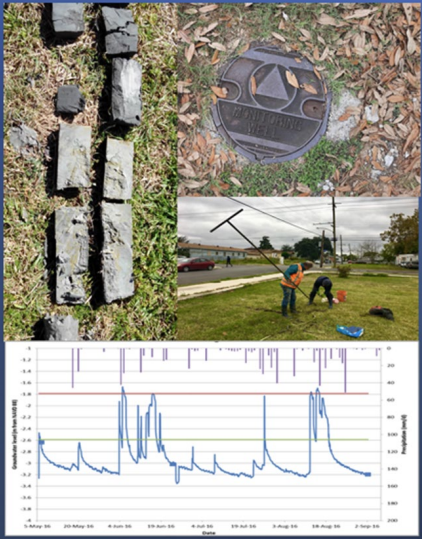
Scientific Research & Monitoring
Co-develop regional monitoring infrastructure and an open science data platform
The institutional capacity to conduct and analyze data related to water management in the region has grown enormously over the past decade. This includes the growth and ongoing impact of entities like the Water Institute, UNO-CHART, and the LSU Coastal Sustainability Studio, as well as the establishment of new research hubs like the Tulane ByWater Institute. Learning across projects and regional jurisdictions can be improved through the development of a suite of key scientific metrics. Scientific practitioners and civic leaders who rely on data to design, refine and adaptively manage their projects cited improved alignment of data collection methods and metrics as an important challenge for the next decade.
Background

“There is not a fully integrated understanding of the groundwater-surface water system in our region. Monitoring is always something that is hard to get funded, but with the data we do have, we could utilize machine learning to learn about the system and help build the case for investing in a more robust data collection effort that can be harnessed for decision-making and forecast predictions into the future.”
- Alyssa Dausman, The Water Institute of the Gulf
“We're doing these green infrastructure projects and we're saying we know the benefits of them, but those are living things—those benefits are changing the second you put them in the ground. That demands a different approach to monitoring”
- Delaney McGuinness, Waggonner & Ball
Insights & Opportunities
Robust datasets and research on stormwater management projects are already providing actionable conclusions to support adaptive management and shifts in next generation designs.
Basic hydrological knowledge gaps limit regional coordination of urban water projects. For instance, governing water levels both within and between drainage jurisdictions are either unknown or documented using different methodologies. Data collection and research projects generally focus on land and waterscapes inside or outside the flood protection system but rarely address regional dynamics across these boundaries.
The role of native vegetation in the urban water cycle is poorly understood. The ways in which individual species and combinations of trees, shrubs, and grasses might impact soil infiltration and evapotranspiration rates has not been comprehensively assessed in the region.
There is no comprehensive or curated source of scientific information related to urban water dynamics in the region, despite considerable investment in research and monitoring over the past ten years.
There is a growing awareness of the importance of groundwater dynamics in the regional system, but detailed knowledge is patchy and incomplete. This places limitations on the design and maintenance of urban water projects.
Increase the collective impact of the research community by establishing a working group of regional universities, technical and community colleges, and community science organizations to share knowledge, funding opportunities, data, and research conclusions.
Ensure opportunities for community leaders and residents to contribute to research efforts—from groundwater, salinity, and subsidence monitoring to flood and heat data gathering—in a systemized and scientifically rigorous way.
Develop a framework for adaptive management that translates and applies research conclusions to real world projects, maintenance, and operations.
Build an interdisciplinary team, including economists, to comprehensively assess and demonstrate cost-effective approaches to building and maintaining green infrastructure, and use that research to develop sustainable funding sources for infrastructure development, maintenance, and operations.
Continue to seek national and international collaborators with researchers and scientific partners in coastal regions facing similar threats to enhance co-learning and highlight the importance of understanding water systems in Greater New Orleans for addressing national and global challenges.
Example Projects




